|
|
|
State of Idaho
standing timber inventory – Wayne Koski - Idaho Department of
Lands
Wayne gave an overview of the inventory, classification and management
of Idaho's endowment lands. These lands were granted the state of Idaho
by the president of the US when it entered statehood in 1890. The
endowment mandates the state manage the lands in a manner that
generates the best long-term funding for certain public institutions,
such as schools. To view the presentation click
here.
|
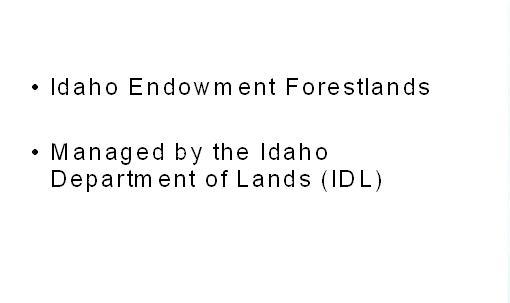
|
|
Determining
mill usage and log yard inventory
via scanners – Matt Fonseca – Plum Creek Timber
Company
Matt
discussed the various methods used to inventory logs stored in decks;
the accounting processes used to calculate usage and cross reference
with deliveries, physical inventory and usage expected via pegged
recoveries ("book inventory"). Matt went on to show that
scanners, which are installed in most sawmills and veneer/plywood
plants, for product optimization, can accurately measure usage. This
scanner derived usage can then be used to corroborate physical
inventory derived usage, which is often predisposed to being less
accurate than is desirable for the monthly P&L statements. To
view the presentation, click here.
|
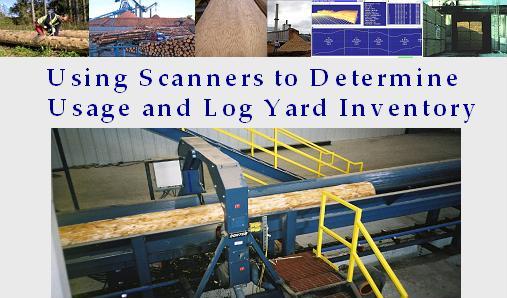
|
Northwest Log Rules Advisory
Group update – Tom St.Laurent
– Yamhill Log Scaling and Grading Bureau
Tom gave a brief history on the NWLAG, which was founded in 1951 to
provide a forum for the scaling bureaus and agencies to discuss scaling
problems and standardize scaling and grading procedures - not only to
the NWLAG rules, but also in conjunction with the USFS regulations. Tom
discussed some new changes to the USFS scaling rules which bring
clarity to the vague instructions for oversize knots and slope of
grain. Tom also pointed out that the NWLAG scaling and grading rule
handbooks can be downloaded from their website. To view the NWLAG
website click
here. |
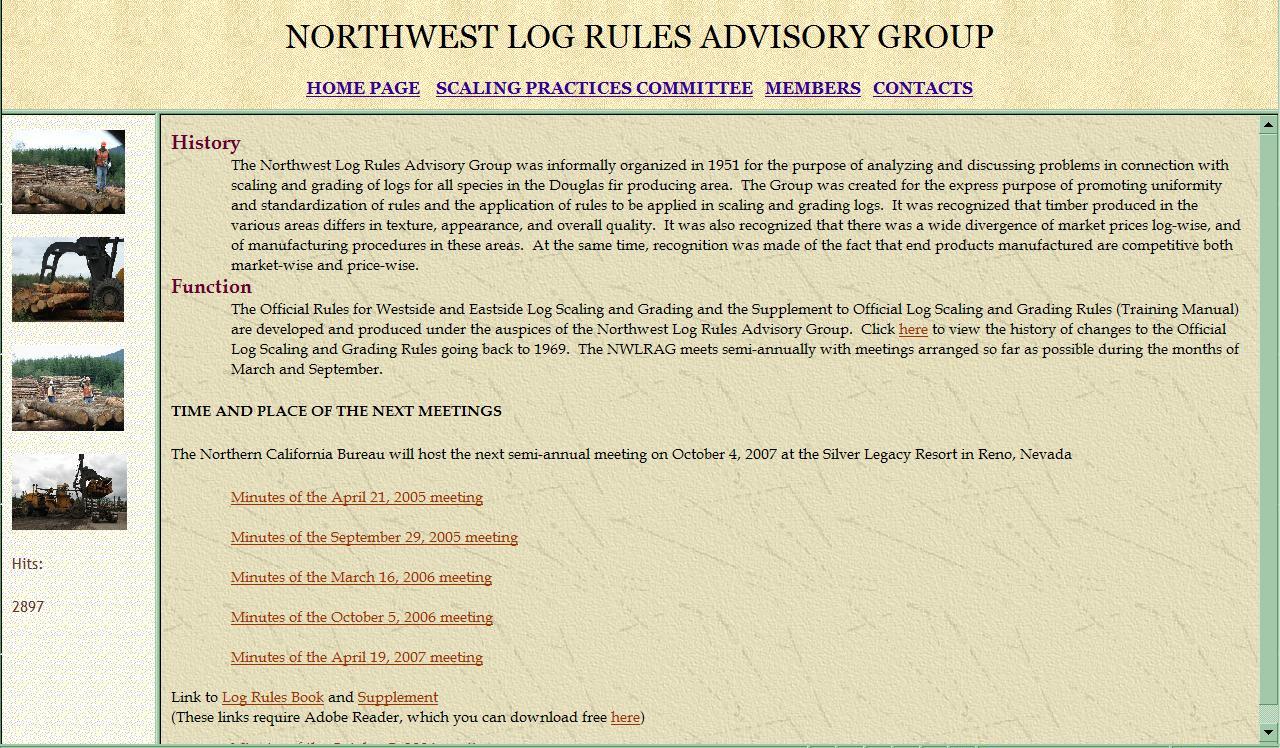
|
|
Blue
Stain in Ponderosa pine
– Russ Carrier – Boise Building Solutions
Russ discussed the cause and effects of blue stain in our western
species. He also covered his personal experience, at Boise Building in
Kettle Falls, WA, to prevent and minimize the effects of this
disfiguring grade problem in pines and spruce. They have an initiative
to mitigate losses by insuring prompt delivery of logs after harvest
and to store logs in a manner that does not allow blue-stain or the
related pond-stain (occurs from watering to prevent blue stain) to
reach levels that are preventable. Click here to see Russ's
presentation.
|
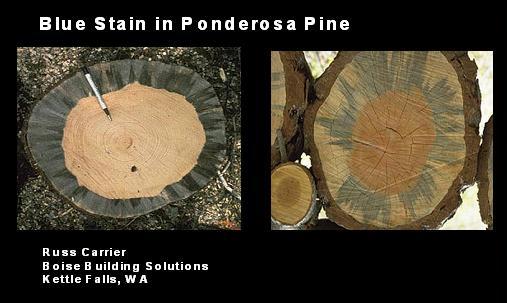
|
Data transfer options for scaling
– David Dean - Electronic Data Solutions
David demonstrated wireless data transfer for handheld data recorders.
The system operates with RF technology and can send information
securely, directly to the receiving PC or main-frame without having to
travel to the docking station to hook cables. The range is certainly
suitable for most scaling applications at a mill log-yard. For more
information contact David at david@elecdata.com
and visit his company's website here.
|
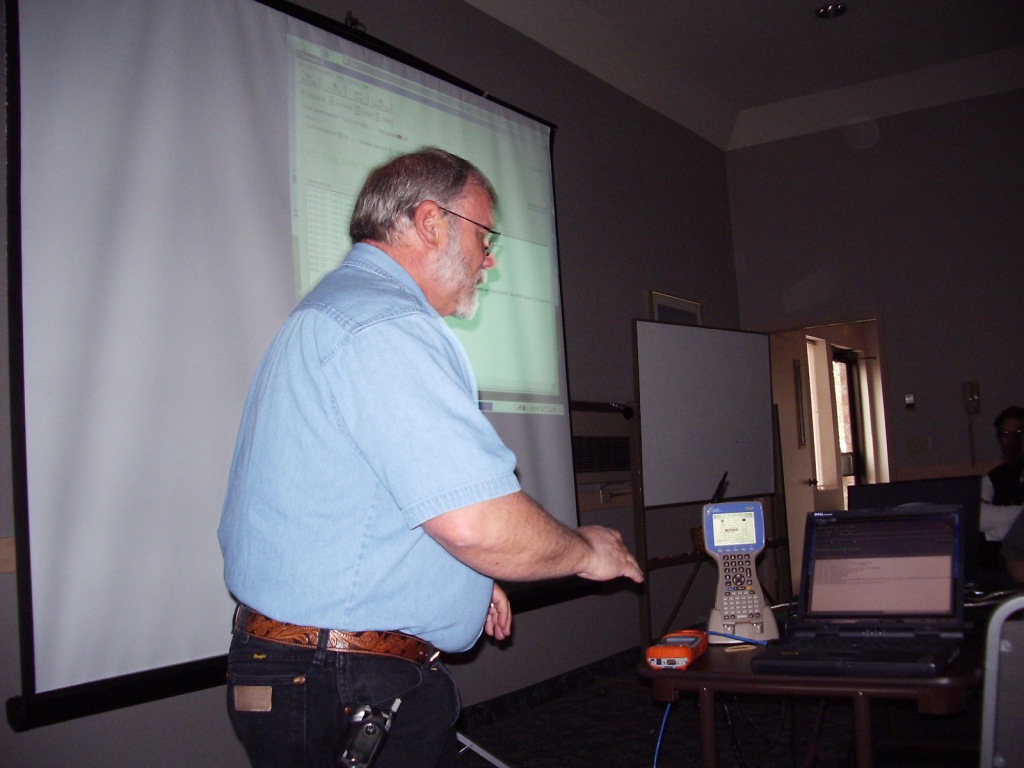
|
Automated
scaling station and scanner – Scott
Dodson – Vaagen Brothers
Scott gave an overview of the automated scaling station that Vaagen's
is using to scale logs, most of which are purchased on a ton basis. The
system operates on a porter scanner with an interface that David Dean
designed to translate scanned measurements into log scale information
and to account for bark thickness and defects based on input from the
scaler (who sits at a temperature controlled work station with a
computer monitor, video display of the far-end of the log, and a view
of the log. The system accurately scales the logs in cubic and Scribner
and utilized the porter optimization software to simulate recovered
product and thus value. On top of providing an accurate log volume, the
system gives real-time break-even value. To view the presentation, click
here. |
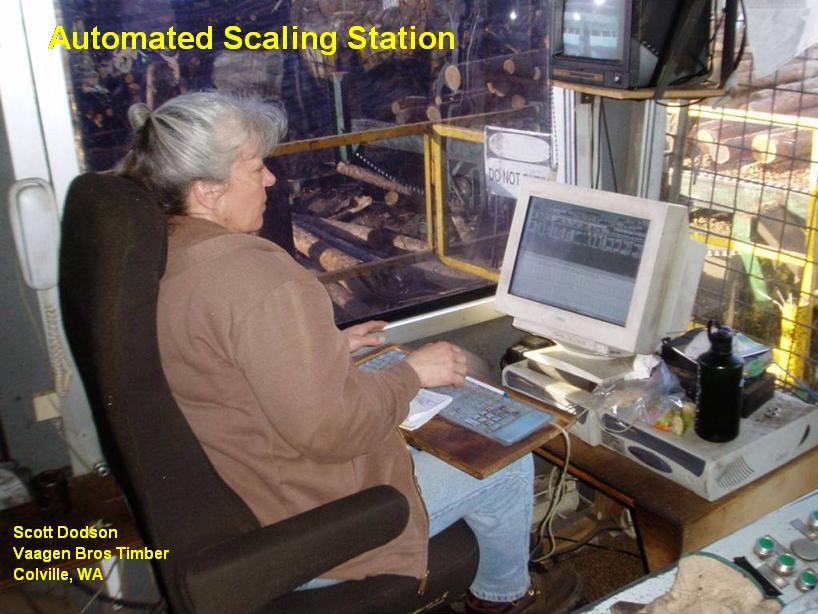
|
New Mensuration Products
– Jon Aschenbach, Atterbury Consultants
Jon showed off some of the new products that they are marketing for
recording log and timber data. They have a complete selection
of lazer range-finders, data-recorders, software and setups for using
palm pilot for recording data. For more information
contact Jon at jaschenbach@atterbury.com
and visit his
company's website
here. |
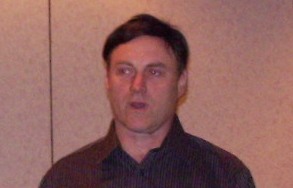 |
Status of forest insects in the
Northern region
– Lee Pederson – United States Forest
Service
Lee gave us a reporting on the status of insect attacks on western
forests, a bit about the biological drivers of these pests and an
overview of what the USFS is doing to manage insect attacks via
timber harvest and other efforts. Lee had some information on
the catastrophic mountain pine beetle infestation which is killing vast
areas of lodgepole pine in the interior of British Columbia and perhaps
elsewhere. As Jim Crover from the BC Ministry of Forest Service was in
attendance, he was able to elaborate on this huge event which has
devastated so much of BC's lodgepole pine stands and is responsible for
what must be the largest timber salvage event ever undertaken. To see
Lee's presentation, click here. |
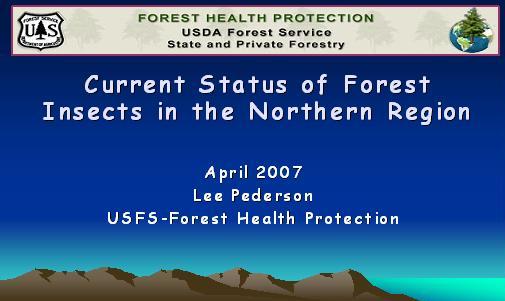
|
Status of Forest diseases in the
Northern region
– Holly Kearns – United States Forest
Service
Holly
went over the causes of disease in our region (fungi, parasitic plants,
bacteria/viruses, and nematodes), environmental conditions and species
preference, as well as significance. She covered the management options
for controlling these pathogens, most of which are native (excepting
the devastating "white pine blister rust"). Holly also pointed out that
while those of us in the roundwood measurement and wood product arenas
may not care for disease; most of these pathogens are part of the
ecosystem and provide benefit in terms of nutrient recycling and
providing wildlife habitat. To see Holly's presentation, click here.
|
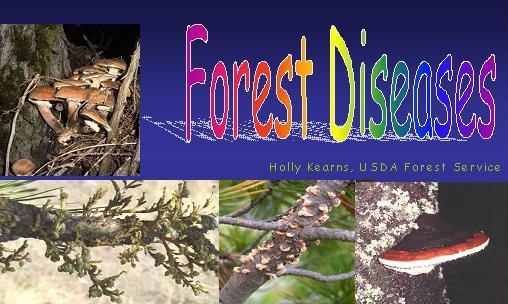
|
Scaling
procedures for top-wood attached sales –
Pete Van Sickle – I.D.L.
Pete instructed everybody on the new scaling procedures used for
sub-sawlog material that is attached to sawlog volume. Given the poor
lumber market, but good pulp log market there is demand for topwood or
small stems which in the past were not profitable. Currently topwood is
sold on a lump-sum basis, which is based on cruised MBF volume. Pete
said that the current guidelines are evolving and will be modified and
improved as needed after consultation with industry and gaining
experience. For the time being, however, a scaling system is in place
and it seems to be accommodating current needs. Click here
to view Pete's presentation. |
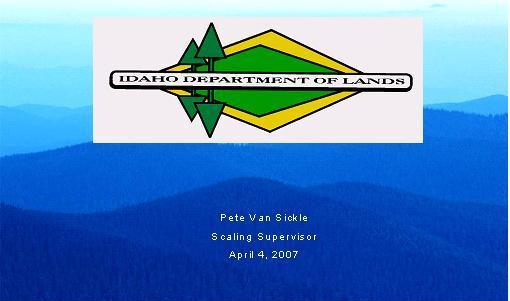
|
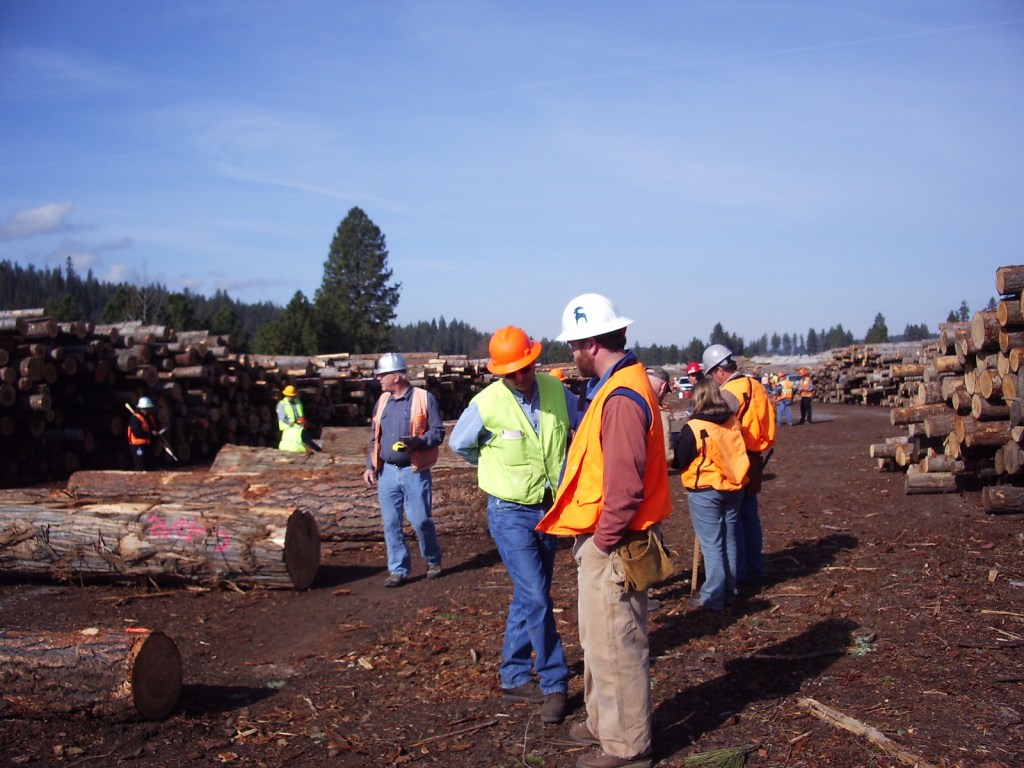
|
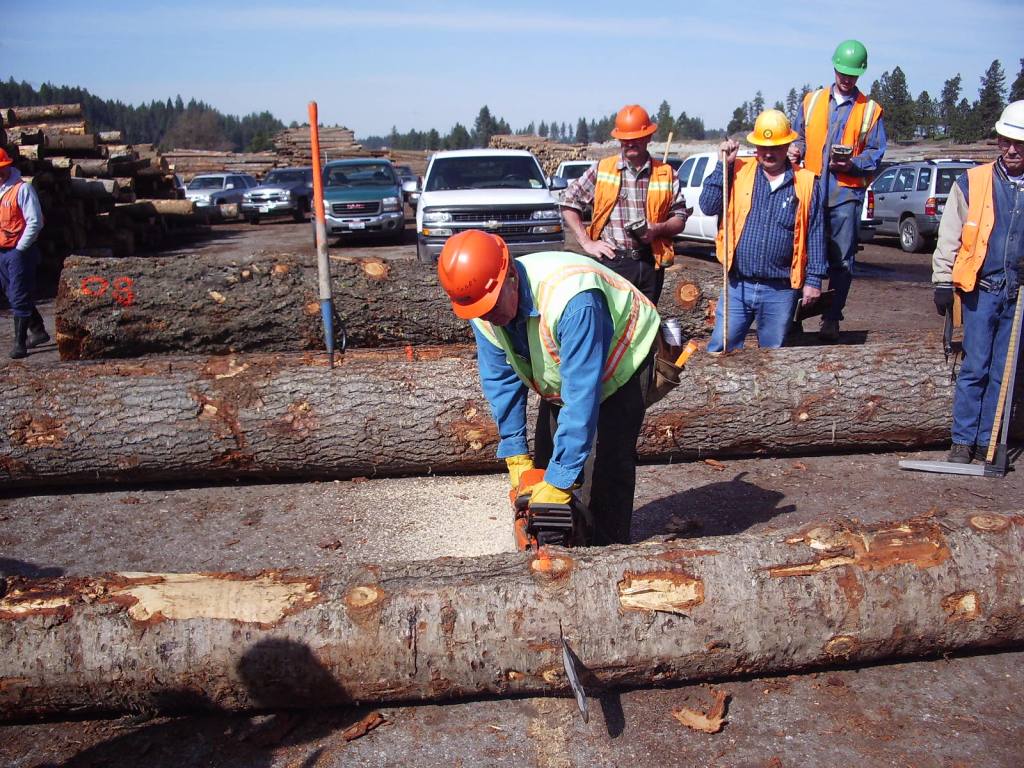
|
| Mike
Rose organized a great log roll-out at the Stimson Seltice log-yard.
Many thanks to him and Stimson for hosting
the rollout. Most
of the attendees of the meeting
participated in the day-two log roll-out whereby everybody scales the
logs; their volumes are recorded; and a "school-book answer is
developed for every log based on agreed measurements, procedures, rule
application, and bucking to assess proper judgment. There were 51 very defective logs
(>35% defect) and it seems that Mike was motivated to show us
the extent of volume loss caused from Scolytus scars in the grand fir
(most of us were surprised how extensive the loss was once the logs
were bucked). No doubt these were some very tough logs. Congratulations
go to Jerry Youmans and Josh Sakasky who both tied for the net volume
closest to the school book answer. With sunny skies and a temperature
over 60 degrees (15 C), scaling does not get any better than this
roll-out (especially if they remember the blizzard at the April 1997
meeting/rollout). |
|